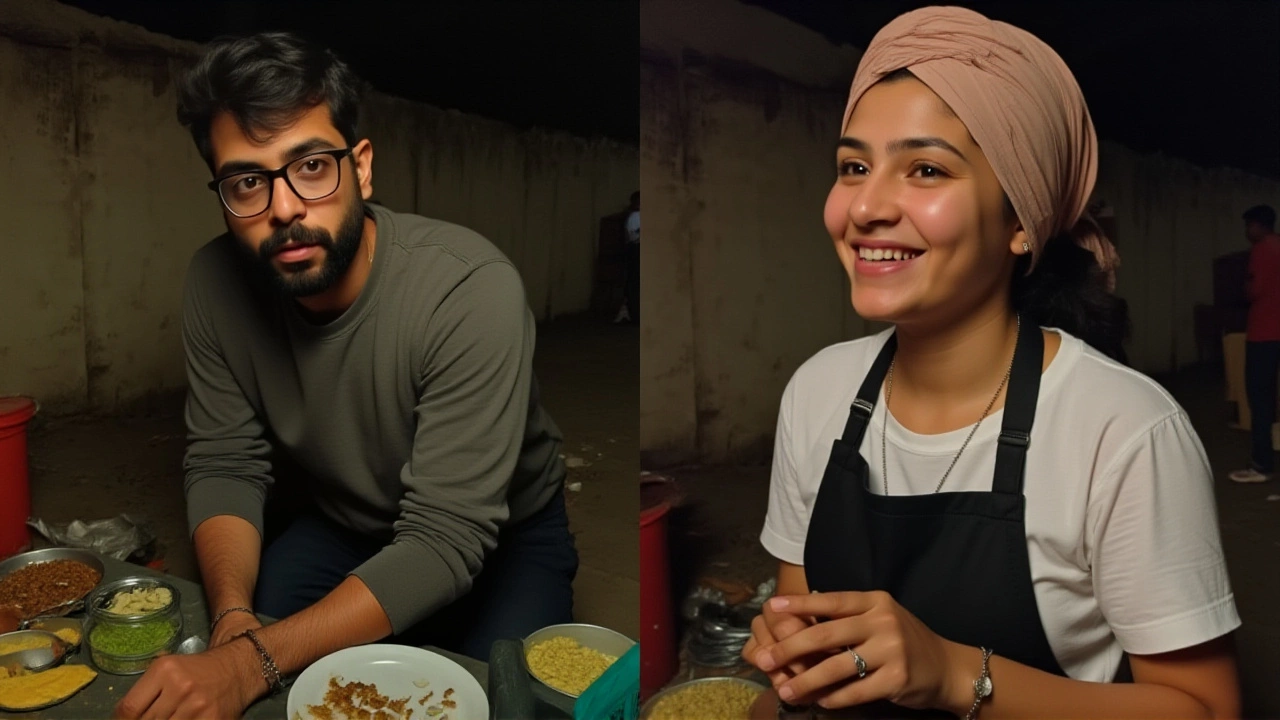When Chandrika Gera Dikshit, a former Haldiram employee, posted a candid interview on HighOnHungry in May 2024, the internet stopped scrolling. In a video that quickly went viral, Chandrika recounted how a humble exchange over tiffin money with her future husband Yash blossomed into a marriage and a thriving vada pav girl brand in Pitampura, Delhi. The story resonated because it blends romance, entrepreneurship, and the gritty reality of street‑food culture, showing how a simple snack can fuel both livelihoods and love.
From Indore Roots to Delhi Streets
Born and raised in Indore, Madhya Pradesh, Chandrika lost both parents while still a teenager. With limited options, she migrated to Delhi in her early twenties, landing a job at the bustling flagship of an Indian snack empire, Haldiram. The fast‑food chain gave her a first taste of the city’s relentless pace, but it was a chance encounter in a tiffin stall that set her future on a completely different track.
The 5‑K Rupee Spark that Ignited a Romance
Yash’s mother ran a modest tiffin‑service from a cramped kitchen near Chandrika’s office. Every afternoon, Chandrika would place an order, and Yash would swing by to collect cash—usually between ₹5,000 and ₹6,000. One rainy evening, as they waited for the rain to subside, a casual question about favorite snacks turned into a deeper conversation about dreams, family, and the city’s food scene. "We were just friends paying for lunch," Chandrika later told the interviewer, "but those few thousand rupees became the backdrop of our story."
From Friendship to Marriage: Building a Business Together
The duo’s friendship deepened over shared recipes and late‑night walks through Delhi’s bustling markets. Within a year, they were engaged, and Chandrika made the bold decision to quit her stable job at Haldiram. Together, they launched a modest stall selling Mumbai‑style vada pav on a wheeled cart in Pitampura. Yash’s mother helped perfect the chutney, while Chandrika handled the frying and the ever‑changing queue of hungry commuters.
Two years later, the cart had outgrown its space. With the assistance of their mother‑in‑law and a small loan from a local microfinance institution, they set up a semi‑permanent kiosk. Today, the business employs three full‑time helpers and serves an average of 250 vada pavs per day, pulling in roughly ₹1.2 million in monthly revenue.

Social Media Fame and the ‘Cart Wars’
Chandrika’s fame burst onto the digital scene when food blogger Rajat Upadhyay filmed her serving a line of customers in 2022. The clip, uploaded to Instagram, amassed over 1.5 million views within days. Since then, Chandrika has cultivated a sizable following on platforms like Instagram and TikTok, where her outspoken personality—often peppered with heated exchanges with fellow vendors and the Delhi Municipal Corporation (MCD)—keeps viewers hooked.
These “cart wars” have been both a blessing and a curse. While the drama fuels virality, it has also led to multiple notices from the MCD for alleged violations of street‑vending regulations. Chandrika, however, argues that the restrictions stifle the very spirit of Delhi’s street‑food culture.
Impact on the Community and the Future
Beyond the buzz, Chandrika’s venture has tangible effects on the local economy. Her stall sources potatoes and spices from nearby wholesale markets, supporting regional farmers. Moreover, her success story inspires other migrant women who see in her a blueprint for turning low‑skill jobs into entrepreneurial opportunities.
Looking ahead, Chandrika and Yash plan to open a small brick‑and‑mortar outlet near the Connaught Place metro station, aiming to cater to office workers craving a quick, spicy bite. They are also exploring a franchise model that would allow other aspiring vendors to replicate their recipe while maintaining quality control.
Key Facts
- Viral interview posted on HighOnHungry in May 2024.
- Chandrika hails from Indore; moved to Delhi in 2018.
- Business generates roughly ₹1.2 million per month.
- Two children, ages 4 and 6, often seen helping at the stall.
- Future plans include a franchise model and a permanent outlet near Connaught Place.

Frequently Asked Questions
How did Chandrika’s early life influence her business?
Losing her parents as a teen forced Chandrika to become self‑reliant. The resilience she built in Indore helped her navigate Delhi’s cut‑throat job market and later the unpredictable world of street vending.
What role does Yash play in the vada pav business?
Yash handles procurement, finances, and the day‑to‑day logistics of the stall. He also assists with the signature chutney, a recipe handed down from his mother’s tiffin service.
Why has Chandrika attracted controversy with the MCD?
Delhi’s municipal rules restrict mobile food carts in many zones. Chandrika’s outspoken videos about these regulations have led to repeated inspections and fines, but they’ve also sparked public debate on the rights of street vendors.
What does the future look like for the ‘vada pav girl’ brand?
With plans for a permanent outlet and a franchise model, Chandrika aims to scale the business while preserving the homemade taste that made her viral. If successful, she could become a case study in micro‑entrepreneurship for migrant women.
How can other vendors learn from Chandrika’s story?
Her journey underscores the importance of authentic storytelling, leveraging social media for free marketing, and building a support network—family, suppliers, and loyal customers alike.
